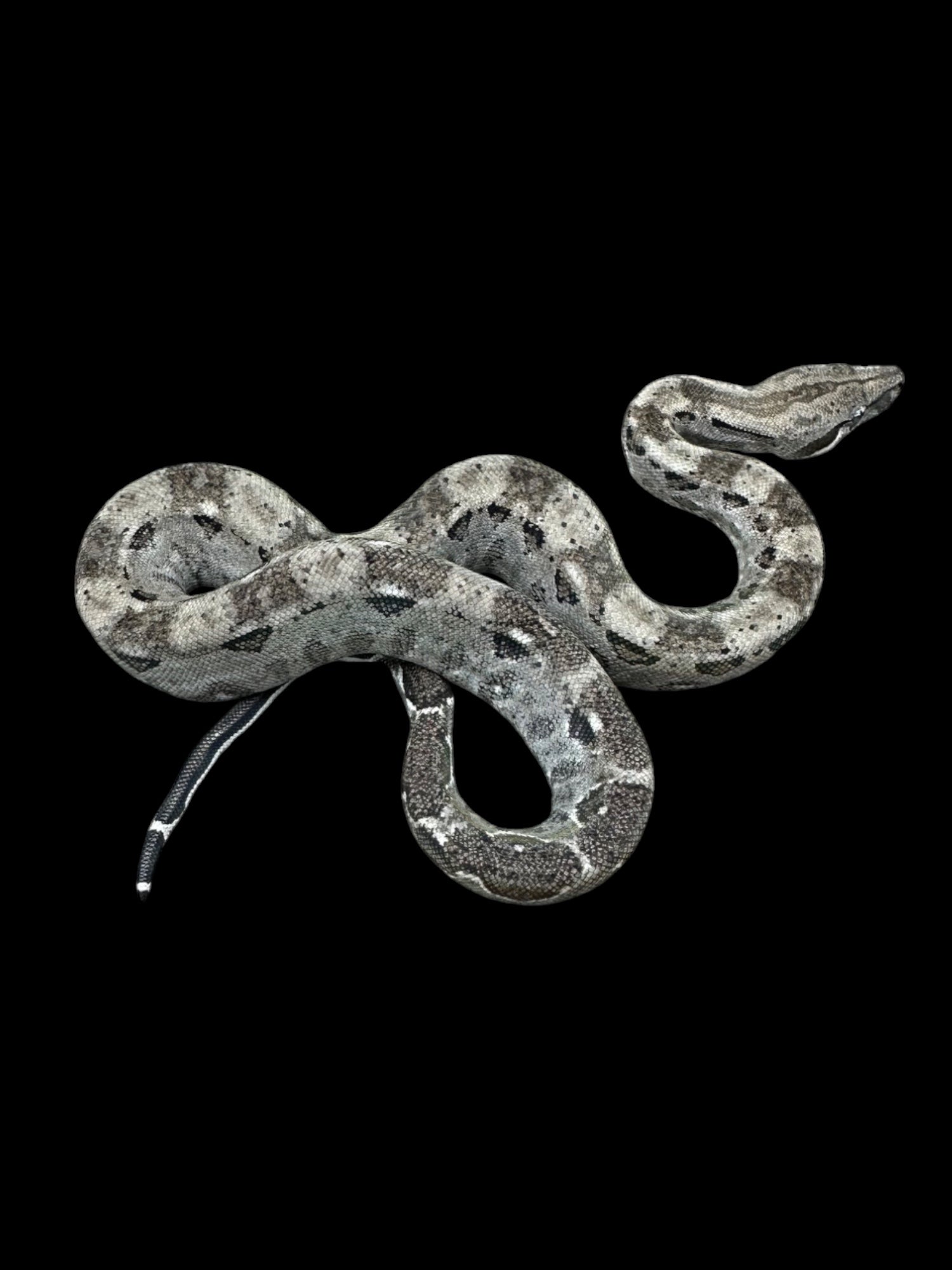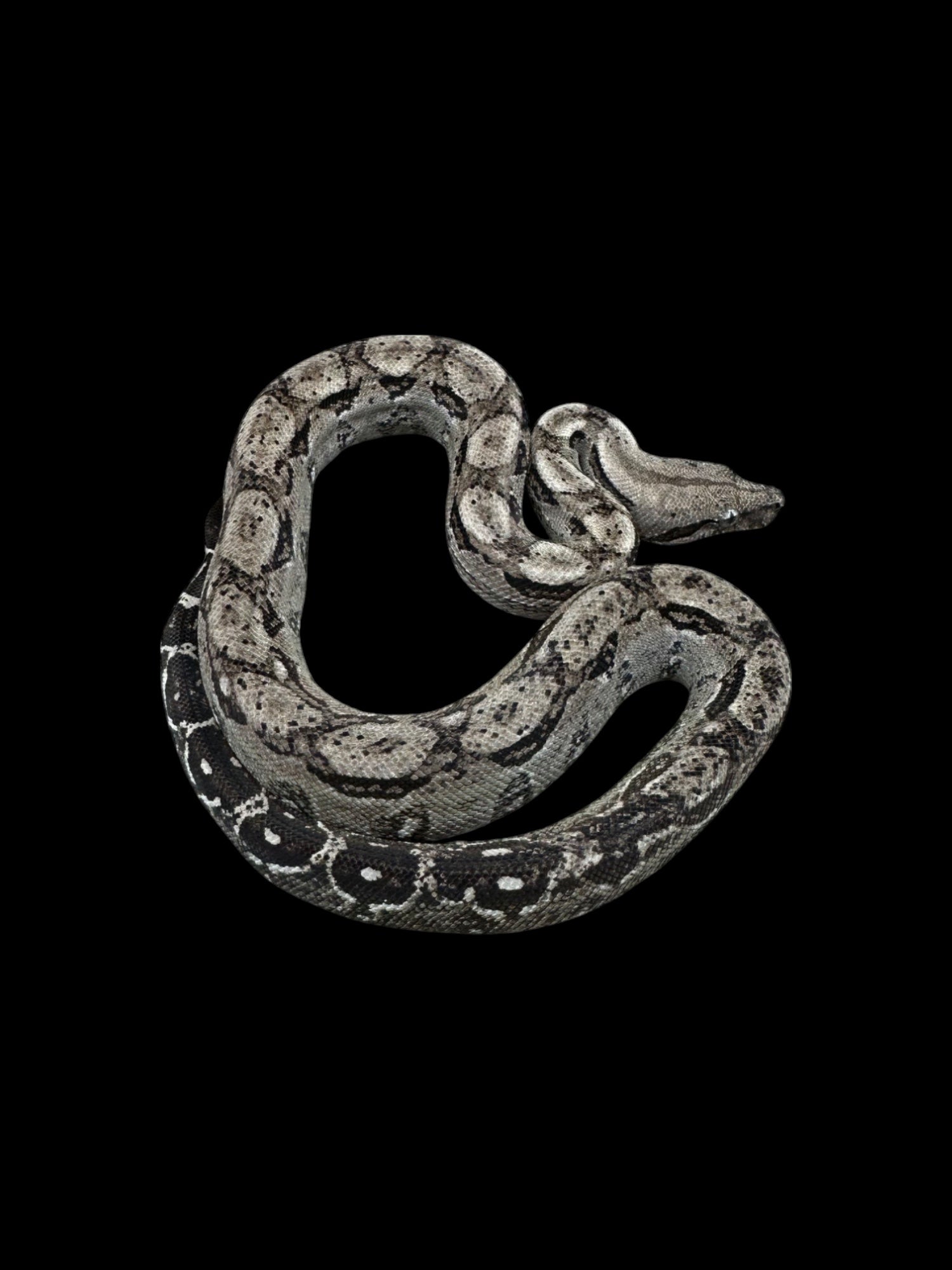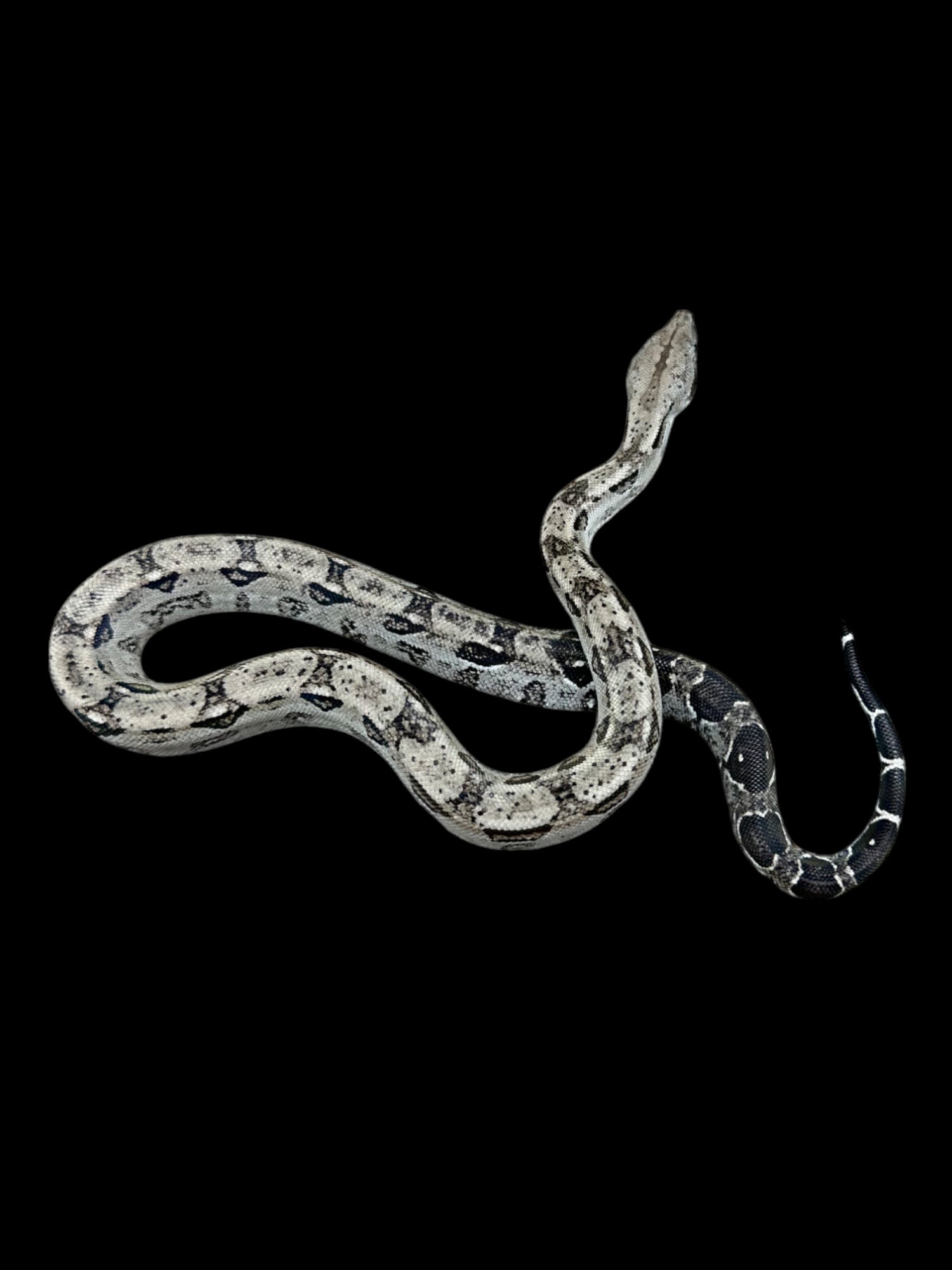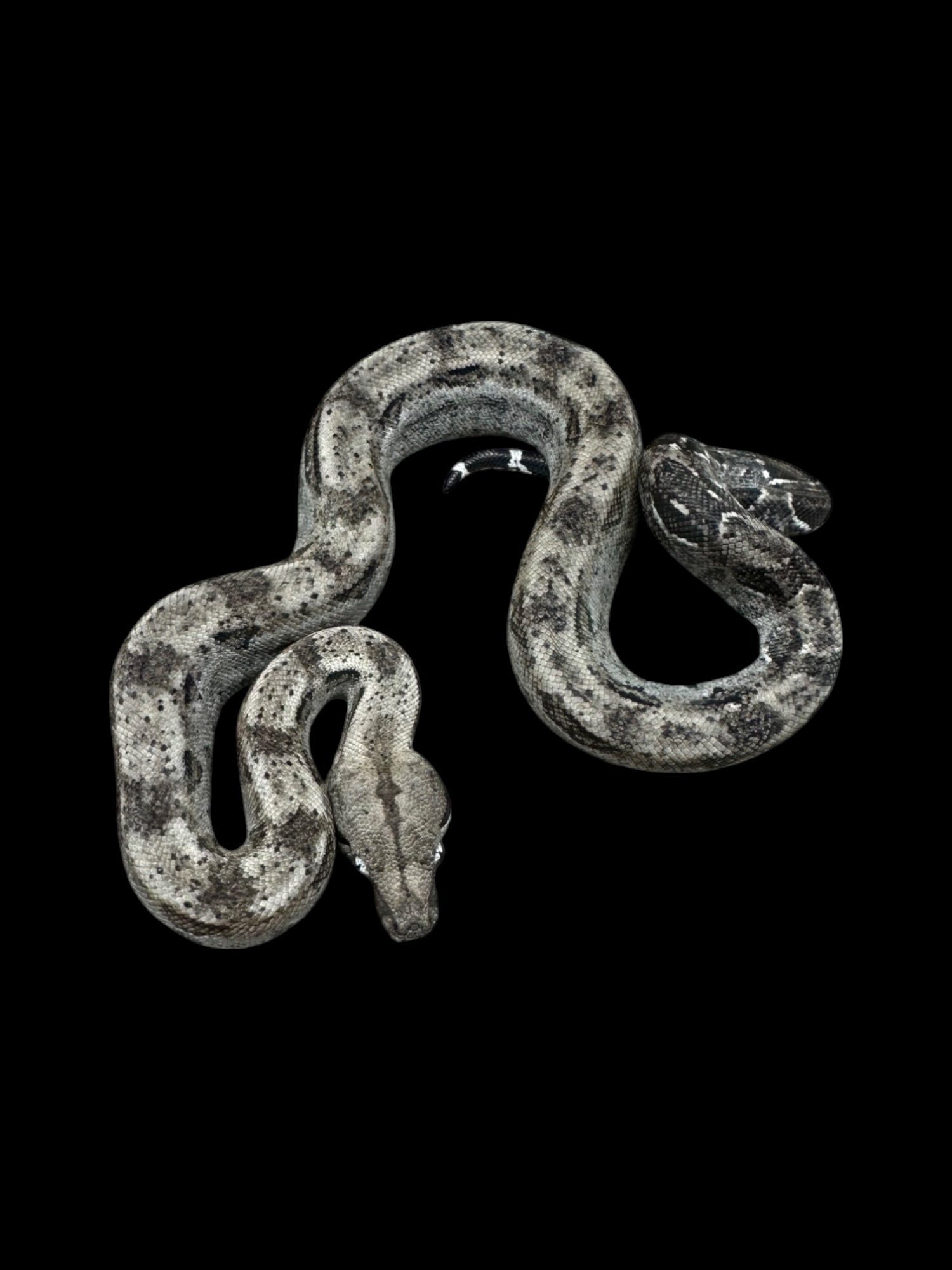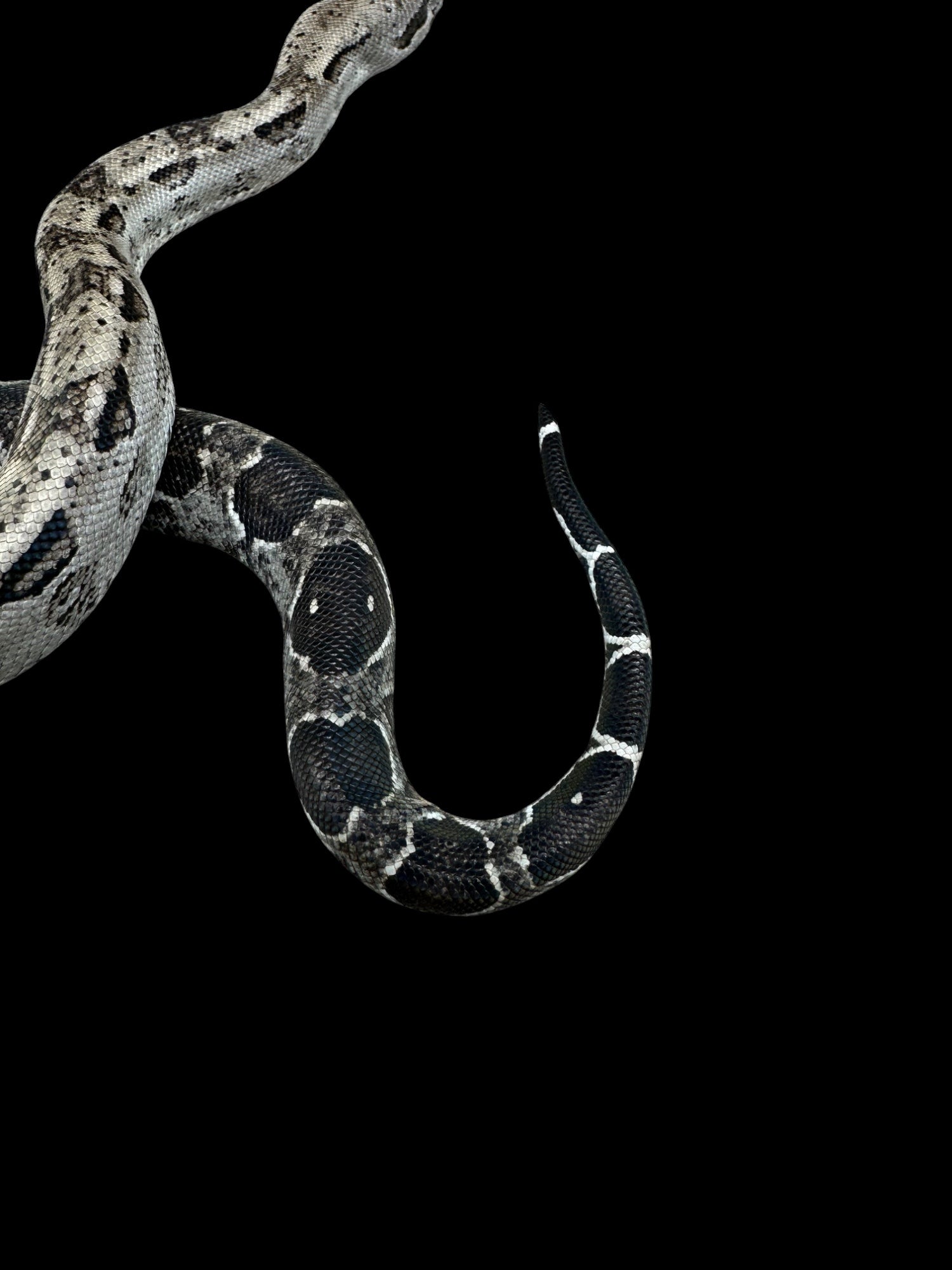Photo Disclaimer
Description
Boa Constrictor Imperator (BCI)
Boa constrictor imperator
Morph/Locality: Type 2 Anery 66% Het Burk's T+ Albino (Nicaraguan)
Species Overview
-
Size: Nicaraguan Boa constrictor imperator are a dwarf locality, averaging 4–6 feet (1.2–1.8 m) as adults, with females larger than males. They are more compact and stockier than Colombian BCIs.
-
Appearance: This boa expresses the Type 2 Anerythristic (Anery) trait, which removes red pigmentation, producing a cooler palette of greys, blacks, and silvers with strong contrast. It is also listed as 66% Het Burk’s T+ Albino, meaning there is a two-thirds probability it carries the Burk’s T+ Albino gene, though this is not visually expressed. The Nicaraguan locality influence contributes smaller size, darker base tones, and bold patterning.
-
Distribution: Native to Nicaragua, a Central American range distinct for producing dwarf, high-contrast boas.
-
Habitat: Wild Nicaraguan boas inhabit tropical forests, scrublands, and riverside regions.
-
Behaviour: Nocturnal ambush predators feeding on small mammals, birds, and reptiles. Juveniles may climb frequently, while adults are primarily terrestrial.
Captive Care
-
Enclosure: Due to their smaller size, adults thrive in 4′ × 2′ × 2′ enclosures, though larger setups are always beneficial. Provide secure hides, climbing branches, cork bark, and plant cover. Bioactive setups with soil substrate, leaf litter, and live plants are excellent for stabilizing humidity and providing enrichment.
-
Temperature & Humidity: Maintain a gradient of 80–85°F (27–29°C), with a basking area of 88–92°F (31–33°C). Nighttime drops to 75–78°F (24–26°C) are acceptable. Humidity should remain 60–75%, slightly higher than Colombian boas, with a large water dish available for soaking.
-
Diet: Juveniles should be fed every 7–10 days on small rodents; adults every 14–21 days. Feeding must be portioned carefully due to their smaller adult size.
-
Behaviour in Captivity: Nicaraguan boas are hardy and typically adapt well to captivity. They may display strong feeding responses but generally tolerate handling once established.
-
Special Considerations: While selective breeding has produced a wide variety of morphs, their core care requirements remain identical to standard Boa constrictor imperator.
Genetics/Lineage Note
The Type 2 Anery 66% Het Burk’s T+ Albino (Nicaraguan) involves:
-
Type 2 Anerythristic (recessive, expressed): Removes red pigmentation, leaving greys, blacks, silvers, and strong contrast.
-
66% Het Burk’s T+ Albino (possible recessive carrier): Two-thirds probability of carrying the Burk’s T+ Albino gene, though it is not visually expressed.
-
Nicaraguan Locality: Distinct dwarf form, averaging 4–6 feet, with stockier bodies, bolder contrast, and darker tones compared to Colombian BCIs.

